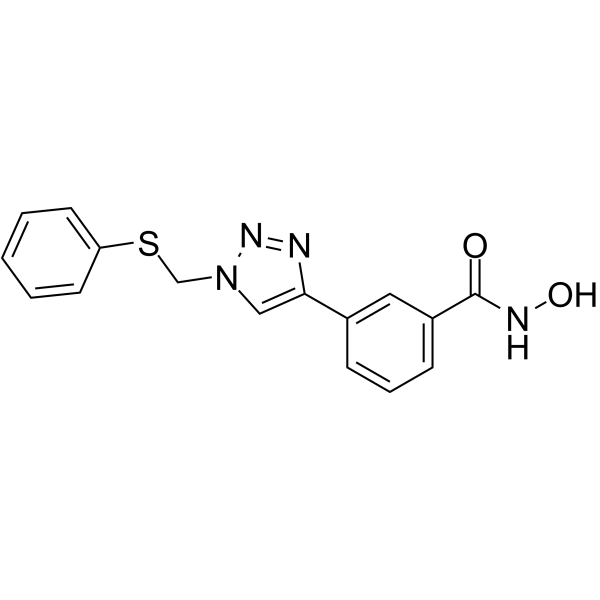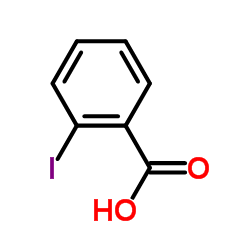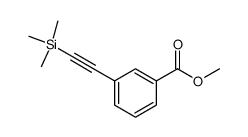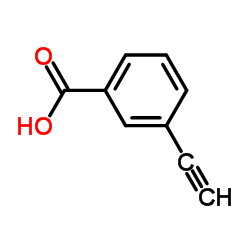1316652-41-1
| 中文名 | N-羟基-3-[1-(苯基硫代)甲基-1H-1,2,3-三氮唑-4-基]苯甲酰胺 |
|---|---|
| 英文名 | N-Hydroxy-3-[1-(phenylthio)methyl-1H-1,2,3-triazol-4-yl]benzamide |
| 英文别名 |
N-Hydroxy-3-[1-(phenylthio)methyl-1H-1,2,3-triazol-4-yl]benzamide
N-oxo-3-[3-(phenylsulfanylmethyl)-1,2-dihydrotriazol-5-yl]benzamide Benzamide, N-hydroxy-3-[1-[(phenylthio)methyl]-1H-1,2,3-triazol-4-yl]- N-Hydroxy-3-{1-[(phenylsulfanyl)methyl]-1H-1,2,3-triazol-4-yl}benzamide |
| 描述 | NCC-149是一种选择性HDAC8抑制剂,可用于神经分化研究[1]。 |
|---|---|
| 相关类别 | |
| 靶点 |
HDAC8 |
| 体外研究 | NCC-149(5μM,3天)显著降低P19细胞中NeuN表达水平[1]。NCC-149(0-40μM,4天)以剂量依赖性方式减少胚体大小[1]。NCC-149(5和20μM,24小时)下调P19细胞增殖[1]。NCC-149(2.5和5μM,24小时)通过G2/M期阻滞导致细胞生长延迟[1]。Western Blot分析[1]细胞系:P19细胞浓度:5μM,孵育时间:3天结果:NeuN表达水平显著降低。细胞增殖试验[1]细胞系:P19细胞浓度:5和20μM孵育时间:24小时结果:细胞增殖下调。细胞周期分析[1]细胞系:P19细胞浓度:2.5和5μM孵育时间:24小时结果:导致G2/M期细胞显著增加,S期细胞略有减少。RT-PCR[1]细胞系:P19细胞浓度:25μM或2.5和5μM孵育时间:4天(25μM)或48小时(2.5或5μM)结果:在mRNA水平上未降低HDAC8的表达。分别显著和部分降低细胞周期蛋白B1和细胞周期蛋白A2基因表达。 |
| 参考文献 |
| 密度 | 1.4±0.1 g/cm3 |
|---|---|
| 熔点 | 153 °C(dec.) |
| 分子式 | C16H14N4O2S |
| 分子量 | 326.373 |
| 精确质量 | 326.083740 |
| PSA | 108.83000 |
| LogP | 1.60 |
| 外观性状 | 固体;Light yellow to Brown powder to crystal |
| 折射率 | 1.691 |
| 储存条件 | 0-10°C;避免加热 |
|
N-Hydroxy-3-[1-(phenylthio)methyl-1H-1,2,3-triazol-4-
Revision number: 5
yl]benzamide SAFETY DATA SHEET Section1. IDENTIFICATION Product name:N-Hydroxy-3-[1-(phenylthio)methyl-1H-1,2,3-triazol-4-yl]benzamide
Revision number:5
Section2. HAZARDS IDENTIFICATION GHS classification PHYSICAL HAZARDSNot classified Not classified HEALTH HAZARDS ENVIRONMENTAL HAZARDSNot classified GHS label elements, including precautionary statements Pictograms or hazard symbolsNone Signal wordNo signal word Hazard statementsNone Precautionary statements:None Section3. COMPOSITION/INFORMATION ON INGREDIENTS Substance Substance/mixture: Components:N-Hydroxy-3-[1-(phenylthio)methyl-1H-1,2,3-triazol-4-yl]benzamide >95.0%(LC) Percent: CAS Number:1316652-41-1 NCC-149 Synonyms: Chemical Formula:C16H14N4O2S Section4. FIRST AID MEASURES Inhalation:Remove victim to fresh air and keep at rest in a position comfortable for breathing. Get medical advice/attention if you feel unwell. Skin contact:Remove/Take off immediately all contaminated clothing. Rinse skin with water/shower. If skin irritation or rash occurs: Get medical advice/attention. Eye contact:Rinse cautiously with water for several minutes. Remove contact lenses, if present and easy to do. Continue rinsing. If eye irritation persists: Get medical advice/attention. Get medical advice/attention if you feel unwell. Rinse mouth. Ingestion: Protection of first-aiders:A rescuer should wear personal protective equipment, such as rubber gloves and air- tight goggles. Section5. FIRE-FIGHTING MEASURES Dry chemical, foam, water spray, carbon dioxide. Suitable extinguishing media: Specific hazards arising Take care as it may decompose upon combustion or in high temperatures to from the chemical:generate poisonous fume. N-Hydroxy-3-[1-(phenylthio)methyl-1H-1,2,3- triazol-4-yl]benzamide Section5. FIRE-FIGHTING MEASURES Precautions for firefighters: Fire-extinguishing work is done from the windward and the suitable fire-extinguishing method according to the surrounding situation is used. Uninvolved persons should evacuate to a safe place. In case of fire in the surroundings: Remove movable containers if safe to do so. Special protectiveWhen extinguishing fire, be sure to wear personal protective equipment. equipment for firefighters: Section6. ACCIDENTAL RELEASE MEASURES Use personal protective equipment. Keep people away from and upwind of spill/leak. Personal precautions, protective equipment and Entry to non-involved personnel should be controlled around the leakage area by emergency procedures: roping off, etc. Environmental precautions: Prevent product from entering drains. Methods and materials for Sweep dust to collect it into an airtight container, taking care not to disperse it. containment and cleaning Adhered or collected material should be promptly disposed of, in accordance with up: appropriate laws and regulations. Section7. HANDLING AND STORAGE Precautions for safe handling Handling is performed in a well ventilated place. Wear suitable protective equipment. Technical measures: Prevent dispersion of dust. Wash hands and face thoroughly after handling. Use a local exhaust if dust or aerosol will be generated. Advice on safe handling: Avoid contact with skin, eyes and clothing. Conditions for safe storage, including any incompatibilities Storage conditions:Keep container tightly closed. Store in a refrigerator. Store away from incompatible materials such as oxidizing agents. Heat-sensitive Packaging material:Comply with laws. Section8. EXPOSURE CONTROLS / PERSONAL PROTECTION Engineering controls:Install a closed system or local exhaust as possible so that workers should not be exposed directly. Also install safety shower and eye bath. Personal protective equipment Respiratory protection: Dust respirator. Follow local and national regulations. Hand protection:Protective gloves. Safety glasses. A face-shield, if the situation requires. Eye protection: Skin and body protection: Protective clothing. Protective boots, if the situation requires. Section9. PHYSICAL AND CHEMICAL PROPERTIES Physical state (20°C):Solid Crystal- Powder Form: Colour:Pale yellow - Greyish yellow red No data available Odour: pH: No data available Melting point/freezing point:153°C (dec.) Boiling point/range:No data available No data available Flash point: Flammability or explosive limits: Lower:No data available No data available Upper: Relative density:No data available Solubility(ies): [Water]No data available No data available [Other solvents] N-Hydroxy-3-[1-(phenylthio)methyl-1H-1,2,3- triazol-4-yl]benzamide Section10. STABILITY AND REACTIVITY Chemical stability:Stable under proper conditions. Possibility of hazardous No special reactivity has been reported. reactions: Incompatible materials: Oxidizing agents Hazardous decomposition Carbon monoxide, Carbon dioxide, Nitrogen oxides (NOx), Sulfur oxides products: Section11. TOXICOLOGICAL INFORMATION No data available Acute Toxicity: Skin corrosion/irritation: No data available No data available Serious eye damage/irritation: Germ cell mutagenicity: No data available Carcinogenicity: No data available IARC = NTP =No data available No data available Reproductive toxicity: Section12. ECOLOGICAL INFORMATION Ecotoxicity: Fish:No data available Crustacea:No data available Algae:No data available Persistence / degradability: No data available BioaccumulativeNo data available potential(BCF): Mobility in soil Log Pow:No data available Soil adsorption (Koc):No data available Henry's LawNo data available constant(PaM3/mol): Section13. DISPOSAL CONSIDERATIONS Recycle to process, if possible. Consult your local regional authorities. You may be able to dissolve or mix material with a combustible solvent and burn in a chemical incinerator equipped with an afterburner and scrubber system. Observe all federal, state and local regulations when disposing of the substance. Section14. TRANSPORT INFORMATION Hazards Class:Does not correspond to the classification standard of the United Nations UN-No:Not listed Section15. REGULATORY INFORMATION Safe management ordinance of dangerous chemical product (State Council announces on January 26, 2002 and revised on February 16,2011): Safe use and production, the storage of a dangerous chemical, transport, loading and unloading were prescribed. N-Hydroxy-3-[1-(phenylthio)methyl-1H-1,2,3- triazol-4-yl]benzamide SECTION 16 - ADDITIONAL INFORMATION N/A |
| 上游产品 5 | |
|---|---|
| 下游产品 0 | |







